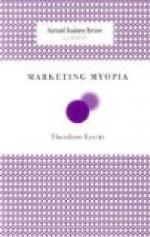Farther, when we see the veins below the ligature instantly swell up and become gorged, when from extreme tightness it is somewhat relaxed, the arteries meantime continuing unaffected, this is an obvious indication that the blood passes from the arteries into the veins, and not from the veins into the arteries, and that there is either an anastomosis of the two orders of vessels, or porosities in the flesh and solid parts generally that are permeable to the blood It is farther an indication that the veins have frequent communications with one another, because they all become turgid together, whilst under the medium ligature applied above the elbow; and if any single small vein be pricked with a lancet, they all speedily shrink, and disburthening themselves into this they subside almost simultaneously.
These considerations will enable anyone to understand the nature of the attraction that is exerted by ligatures, and perchance of fluxes generally; how, for example, when the veins are compressed by a bandage of medium tightness applied above the elbow, the blood cannot escape, whilst it still continues to be driven in, by the forcing power of the heart, by which the parts are of necessity filled, gorged with blood. And how should it be otherwise? Heat and pain and a vacuum draw, indeed; but in such wise only that parts are filled, not preternaturally distended or gorged, and not so suddenly and violently overwhelmed with the charge of blood forced in upon them, that the flesh is lacerated and the vessels ruptured. Nothing of the kind as an effect of heat, or pain, or the vacuum force, is either credible or demonstrable.
Besides, the ligature is competent to occasion the afflux in question without either pain, or heat, or a vacuum. Were pain in any way the cause, how should it happen that, with the arm bound above the elbow, the hand and fingers should swell being the bandage, and their veins become distended? The pressure of the bandage certainly prevents the blood from getting there by the veins. And then, wherefore is there neither swelling nor repletion of the veins, nor any sign or symptom of attraction or afflux, above the ligature? But this is the obvious cause of the preternatural attraction and swelling below the bandage, and in the hand and fingers, that the blood is entering abundantly, and with force, but cannot pass out again.
Now is not this the cause of all tumefaction, as indeed Avicenna has it, and of all oppressive redundancy in parts, that the access to them is open, but the egress from them is. closed? Whence it comes that they are gorged and tumefied. And may not the same thing happen in local inflammations, where, so long as the swelling is on the increase, and has not reached its extreme term, a full pulse is felt in the part, especially when the disease is of the more acute kind, and the swelling usually takes place most rapidly. But these are matters for after discussion. Or does this, which occurred in my




